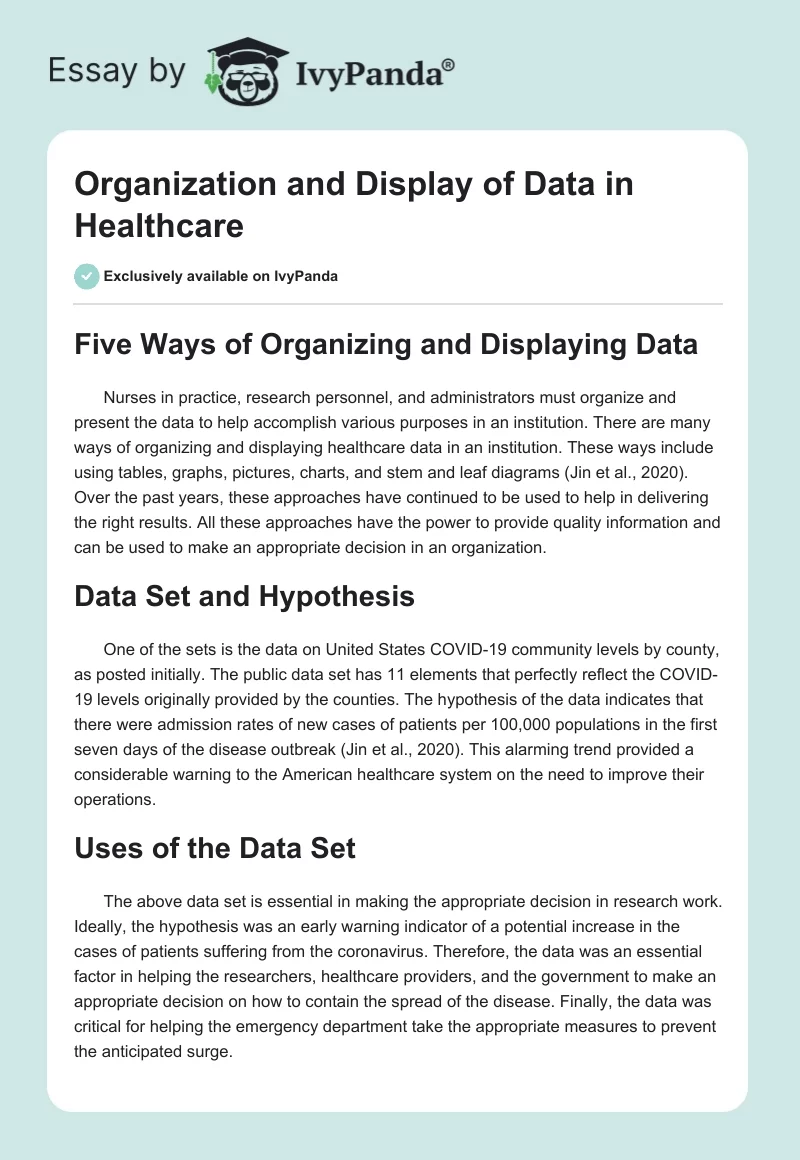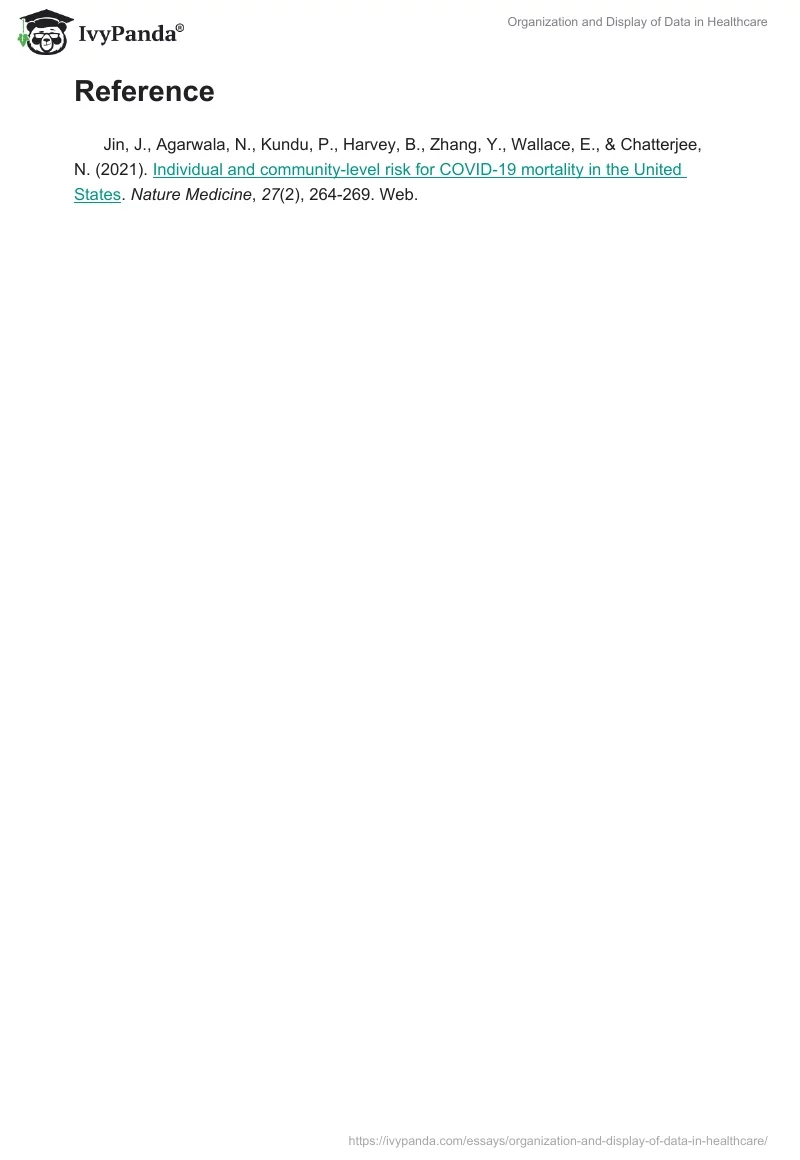Five Ways of Organizing and Displaying Data
Nurses in practice, research personnel, and administrators must organize and present the data to help accomplish various purposes in an institution. There are many ways of organizing and displaying healthcare data in an institution. These ways include using tables, graphs, pictures, charts, and stem and leaf diagrams (Jin et al., 2020). Over the past years, these approaches have continued to be used to help in delivering the right results. All these approaches have the power to provide quality information and can be used to make an appropriate decision in an organization.
Data Set and Hypothesis
One of the sets is the data on United States COVID-19 community levels by county, as posted initially. The public data set has 11 elements that perfectly reflect the COVID-19 levels originally provided by the counties. The hypothesis of the data indicates that there were admission rates of new cases of patients per 100,000 populations in the first seven days of the disease outbreak (Jin et al., 2020). This alarming trend provided a considerable warning to the American healthcare system on the need to improve their operations.
Uses of the Data Set
The above data set is essential in making the appropriate decision in research work. Ideally, the hypothesis was an early warning indicator of a potential increase in the cases of patients suffering from the coronavirus. Therefore, the data was an essential factor in helping the researchers, healthcare providers, and the government to make an appropriate decision on how to contain the spread of the disease. Finally, the data was critical for helping the emergency department take the appropriate measures to prevent the anticipated surge.
Reference
Jin, J., Agarwala, N., Kundu, P., Harvey, B., Zhang, Y., Wallace, E., & Chatterjee, N. (2021). Individual and community-level risk for COVID-19 mortality in the United States. Nature Medicine, 27(2), 264-269. Web.


